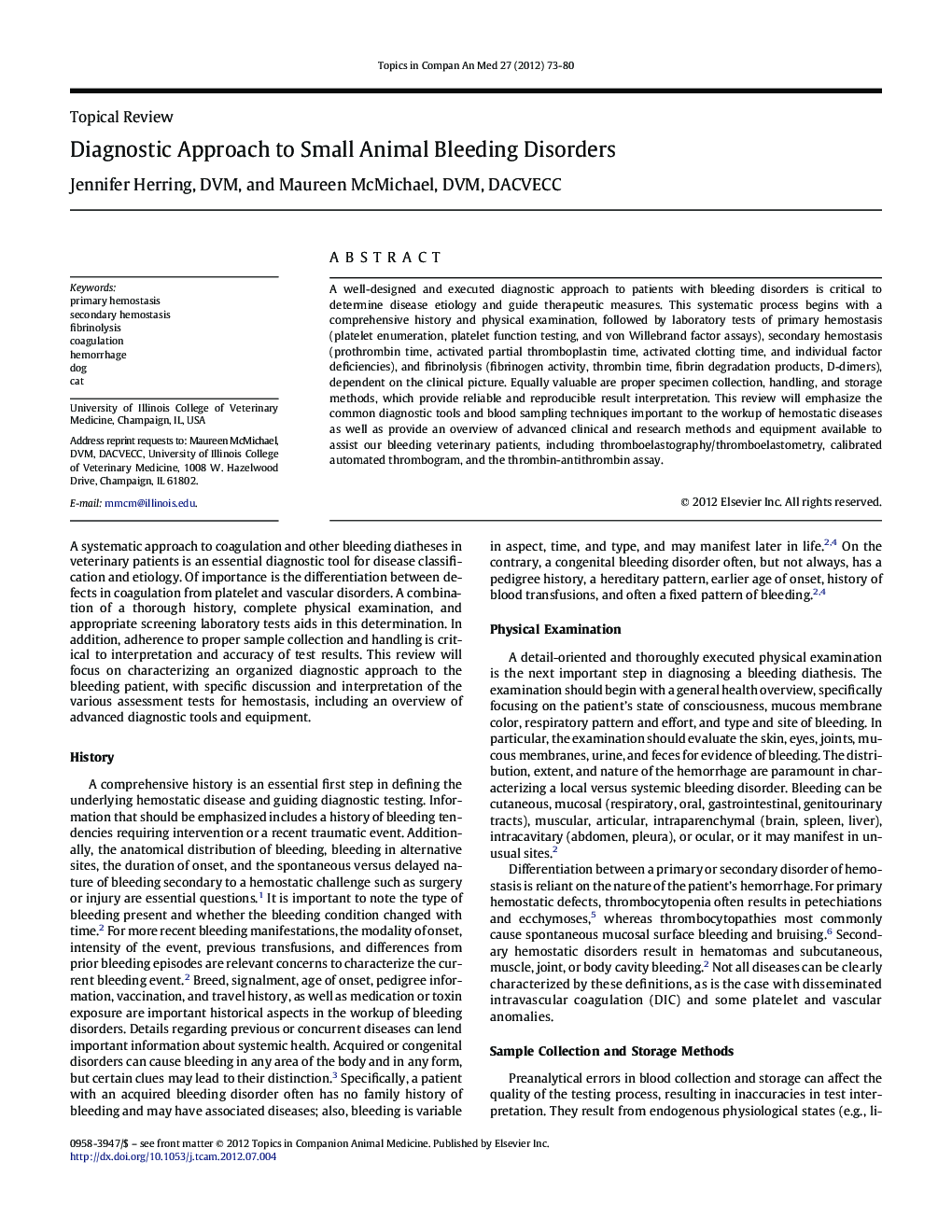| Article ID | Journal | Published Year | Pages | File Type |
|---|---|---|---|---|
| 2401261 | Topics in Companion Animal Medicine | 2012 | 8 Pages |
A well-designed and executed diagnostic approach to patients with bleeding disorders is critical to determine disease etiology and guide therapeutic measures. This systematic process begins with a comprehensive history and physical examination, followed by laboratory tests of primary hemostasis (platelet enumeration, platelet function testing, and von Willebrand factor assays), secondary hemostasis (prothrombin time, activated partial thromboplastin time, activated clotting time, and individual factor deficiencies), and fibrinolysis (fibrinogen activity, thrombin time, fibrin degradation products, D-dimers), dependent on the clinical picture. Equally valuable are proper specimen collection, handling, and storage methods, which provide reliable and reproducible result interpretation. This review will emphasize the common diagnostic tools and blood sampling techniques important to the workup of hemostatic diseases as well as provide an overview of advanced clinical and research methods and equipment available to assist our bleeding veterinary patients, including thromboelastography/thromboelastometry, calibrated automated thrombogram, and the thrombin-antithrombin assay.
